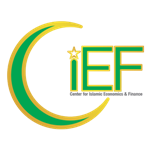Implementation of Modern Monetary Theory Through Printing Money as an Economic Stimulus Solution Islamic Perspective
Abstract
The current Covid-19 pandemic has caused the global economy to stagnate. A significant decline in the rate of economic growth was experienced by almost every country, including Indonesia. Printing money is one solution, but an in-depth study needs to be done considering that there are differences in success when implemented, one of which is in European countries, Indonesia and Zimbabwe. For this reason, the purpose of this paper is to conduct an in-depth study of the correct understanding, mechanism, and application of printing money that can stimulate economic growth from an Islamic perspective. This research approach uses literature study, in collecting data by understanding and studying theories from various literature related to this research. The results of the study indicate that- to solve the problem of the economic crisis, can be overcome by using a printing money policy. This policy has been successfully implemented in developed countries such as America, China, and several European countries so that they can get out of the crisis. The reason for its success is by taking into account the following points: first, the understanding of the modern MMT theory and the traditional MMT theory that both theories agree on the MMT derivative product namely printing money, only that modern MMT accompanies the project-based policy. Second, using the right mechanism where money is used according to its function in the Islamic perspective as a medium of exchange and standard prices where the application of printing money is project-based and is not used to cover consumptive government spending so that the amount of money in circulation depends on the number of goods and services. In production, this condition does not cause inflation. Third, the implementation of printing money is channeled to productive government needs. Automatically the circulation of money in circulation according to the number of goods and services produced.
Keywords
Full Text:
PDFReferences
Adiwarman Karim. (2007). Ekonomi Makro Islami. PT RajaGrafindo Persada.
Affandi, F. (2021). Fungsi Uang dalam Perspektif Ekonomi Islam. Jurnal Ekonomi Syariah, 1(1 Desember 2020).
Bell, S. (2000). Do taxes and bonds finance government spending? Journal of Economic Issues, 34(3), 603–620.
Berkin; et al., C. (2011). Making America, Volume 2: A History of the United States: Since 1865 (pp. 629–632). Cengage Learning.
BPS. (2020). ekonomi-indonesia-triwulan-ii-2020-turun-5-32-persen. https://www.bps.go.id/pressrelease/2020/08/05/1737/-ekonomi-indonesia-triwulan-ii-2020-turun-5-32-persen.html
Bungin, B. (2020). Post Qualitative Sosical Research Methods (pp. 236–239). Kencana.
Chohan, U. W. (2020). Modern Monetary Theory (MMT): A General Introduction. SSRN Electronic Journal. https://doi.org/10.2139/SSRN.3569416
Dorimulu, P. (2020). Cetak Uang untuk Stimulus Ekonomi. https://www.beritasatu.com/opini/6747/cetak-uang-untuk-stimulus-ekonomi [ONLINE]
Fadilla, F. (2016). Pemikiran Ekonomi Al-Maqrizi. Islamic Banking : Jurnal Pemikiran Dan Pengembangan Perbankan Syariah, 2(1), 35–50. https://doi.org/10.36908/isbank.v2i1.37
Fadli, M. R. (2021). Memahami desain metode penelitian kualitatif. Humanika, 21(1), 33–54. https://doi.org/10.21831/hum.v21i1.38075
Fitriani, F. F. (2020). cetak-uang-baru-dianggap-tidak-picu-hiperinflasi-ini-alasan-core-indonesia. https://ekonomi.bisnis.com/read/20200605/9/1248837/cetak-uang-baru-dianggap-tidak-picu-hiperinflasi-ini-alasan-core-indonesia.
Frensydi, B. (2020). Menampik Cetak Uang Demi menjaga Inflasi. Koran Kontan. Rubrik Bursa – Wake Up Call, 4. https://www.feb.ui.ac.id/blog 29 mei 2020.
Friedman, Ghodart, M., & H, C. (2002). Money, Inflation and Constitutional Poetion of Central Bank,. The Institute of Economic Affairs.
Globerman, S. (2020). Modern monetary theory, Part 4: MMT and quantitative easing. The Fraser Institute Blog. https://www.fraserinstitute.org/
Horsley, S. (2019). This Economic Theory Could Be Used To Pay For The Green New Deal. https://www.npr.org/2019/07/17/742255158/this-economic-theory-could-be-used-to-pay-for-the-green-new-deal
Huber, H. (2014). Modern Money Theory and New Currency Theory. Researchgate, 44.
Idris, M. (2020). Berkaca dari Zimbabwe Ini Sederet Risiko Jika RI Cetak Uang Terlalu Banyak. http://https//money.kompas.com, diakses pada rabu 17 februari 2021 pukul 23:00
Janwari, Y. (2016). Pemikiran Ekonomi Islam, dari Masa Rasulullah hingga Masa Kontemporer.
Lawson, A. (2021). Should Governments Print Money to Make It through the Pandemic? https://insights.som.yale.edu/insights/should-governments-print-money-to-make-it-through-the-pandemic
Mankiw, N. G. (2006). Makroekonomi (Keenam, p. 88). Erlangga.
Maqrizi. (1957). Al-Ighathah al-Ummah bi Kashfi al-Ghummah. Matba`ah Li al-Jannah.
Nugroho, R. B. (2020). Dampak Covid 19 Bagi Kegiatan Ekonomi Masyarakat. , Fakultas Keguruan Ilmu Pendidikan, Universitas Lambung Mangkurat.
Oularis Sam, & Celina Wochon. (2021). Pre- and Post-Global Financial Crisis Policy Multipliers. Journal of Macro Economics, 70, 103370.
Pettinger, T. (2020). Can you print money without causing inflation? https://www.economicshelp.org/blog/162643/economics/how-can-you-print-money-without-causing-inflation/
Prinz, A., & Back, H. (2021). Modern Monetary Theory: A Solid Theoretical Foundation of Economic Policy? Atlantic Economic Journal, 49(2).
Purwasi, D. (2020). Cetak Uang Baru Dan Teori Moneter Modern MMT. https://www.republika.co.id/berita/qa9vml257/cetak-uang-baru-dan-teori-moneter-modern-mmt
Sawyer, M. (2019). Modern Monetary Theory: is there any added value. Researchgate.
Sihono, T. (2008). Krisis Finansial Amerika Serikat Dan Perekonomian Indonesia. Jurnal Ekonomi & Pendidikan, 5(2), 175.
Syabir, M. U. (1992). Al-Muamalat al-Maliyah al-Mu’ashirah. Yordan: Dar Al-Nafais, 180.
Syarifudin. (2021). jadi-negara-terkaya-dunia-ekonomi-china-resmi-salip-as. https://www.idxchannel.com/economics/jadi-negara-terkaya-dunia-ekonomi-china-resmi-salip-as
Wittaker, J. (2020). Modern monetary theory: the rise of economists who say huge government debt is not a problem. Https://Theconversation.Com.
DOI: http://dx.doi.org/10.24042/febi.v7i1.11517
Refbacks
- There are currently no refbacks.
Copyright (c) 2022
Ikonomika : Jurnal Ekonomi dan Bisnis Islam is a Journal of Islamic Economics and Business, Published by the Faculty of Islamic Economics and Business at UIN Raden Intan Lampung Indonesia. This work is licensed under a Creative Commons Attribution-ShareAlike 4.0 International License.


